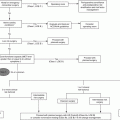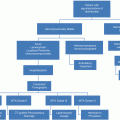Surgical ICU characteristics
Barrier to palliative care
Structure and process
“Open” ICU
No leadership to drive change
Multiple consultants
No standard processes in place
No interdisciplinary team rounds or processes of care
No one person has responsibility for end-of-life decisions or communication
Surgical hierarchy prevails
Interdisciplinary team undermined or devalued
Surgeon has primary relationship with family, not ICU team
Communication in silos leads to conflict and delays in decision making
Delay in palliative care consult
Surgical patients and disease
Different disease trajectories: trauma, transplant, surgical oncology, neurosurgery
One palliative care approach does not fit all ICU patients
Lack of clear prognosis for mortality
Triggers for palliative care evaluation need to be disease specific
Lack of quality of life or functional outcome data
Cannot tell who is dying, then cannot do palliative care until very late in course
Difficult to predict if patient’s quality of life will be acceptable to patient’s wishes
Families
Sudden or catastrophic illness
Lack of readiness for end-of-life decisions
High expectation for lifesaving surgery (transplant, cardiovascular)
Unwillingness to accept poor outcome
No knowledge of patient’s wishes
Family burdened by decision making
Intensive need for family support
Surgeons’ attitudes
Palliative care = end-of-life care, only for dying
Palliative care delayed until death imminent
Death is a failure
Avoidance and delay of family meetings and end-of-life decisions
Fear of abandonment
Refuse palliative care consultation
Fear of destroying hope
Avoidance of discussion of bad prognosis
Lack of skill or expertise in communication, pain management
Surgical Buy-In
Several barriers have been identified that hinder a timely and adequate approach to end-of-life care, and one of the greatest barriers is that of surgical culture. The historical surgical culture and approach has been one of a warrior against disease carrying the absolute responsibility to save the patient’s life [20]. This culture can act as a barrier to open discussions and decision making. Admitting defeat by allowing a patient to die by withdrawing or withholding life-sustaining interventions is an emotional difficulty that many surgeons are unwilling to face. As a result, surgeons frequently delay end-of-life discussions and palliative care treatment for their patients despite patient or family member requests for these measures. Moreover, many patients and families find that continuation of therapies often proceed beyond a time when they feel it is wanted or even acceptable [21].
The relationship between the surgeon and patient has been described as both a covenant and an implicit contract made preoperatively between a patient and their physician [20, 22]. In an analysis of physicians’ opinions regarding the contract between patient and physician, Schwarze et al. found that several important steps occurred during the preoperative surgical planning and discussion. It is during this time when a commitment is made and a contract is created that frequently has important consequences in the postoperative time period [20].
Establishing Goals of Care
The transition of care from curative to palliative does not need to be a dramatic shift in strategy (Fig. 36.1). A patient-centered approach to care should include early discussions with the patient and family regarding goals of care and treatment limitations. These discussions should occur prior to the acute situation when decisions are difficult to make and most frequently the patient is no longer able to voice his or her opinions. In situations where the admission to the hospital or ICU is the initial acute situation, the discussion should occur as soon as possible—ideally, during the initial conversation with the patient and/or family [24]. Communicating clearly and establishing an open dialogue are critical to setting expectations and allowing those with the most at stake to be active participants in healthcare decisions.
One of the first steps is clearly delineating goals of care. Goals of care include the expectations of the patient and surgeon if everything goes as planned as well as if there are significant complications encountered. These goals should include discussions regarding optimal treatment outcomes and what the patient would consider outcomes that they would see as unacceptable. Many patients have opinions regarding quality of life limitations that they have considered privately but never spoken about to family or healthcare providers.
Treatment limitations include setting limits on the aggressiveness with which to sustain life. These limitations may be made considering both the potential for survival and/or the subsequent quality of life. Treatment limitations might include any number of treatment modalities. These limitations are best set while the patient is lucid and able to rationally consider all treatment options.
Do Not Resuscitate
The Do Not Resuscitate (DNR) order is the most commonly recognized treatment limitation. On the surface DNR seems simple to understand and implement; however, there are many nuances to the DNR order that complicate execution of the wishes of the patient. Frequently, DNR orders are not discussed during the preoperative stages of care. Furthermore, most hospitals have rules regarding DNR order holding while the patient is in the operating room. DNR orders may also be complicated to understand as many individuals do not want a portion of resuscitation but would allow other treatment modalities if necessary. For example, a patient may not want chest compressions but would allow intubation or performance of electrical defibrillation. There are stigmata surrounding various resuscitation treatments held by healthcare providers as well as patients. Most patients do not understand the risks and benefits of undergoing CPR in the hospital setting. Similarly, many healthcare providers are uncomfortable “allowing” a patient to die without intervention through heroic measures despite data showing poor outcomes in patients who suffer a cardiorespiratory arrest during hospitalization.
The use of “partial DNR” orders should be discouraged [25]. These orders are intended to provide a tailored approach to an anticipated patient needs and desires; however, because it is impossible to predict all potential patient scenarios, these types of orders frequently lead to nonbeneficial or harmful interventions [25]. For example, a patient may not want chest compressions, but the use of medications without chest compressions during an arrest is extremely unlikely to be of any benefit to that patient. Patient education and physician response to patient emotions and questions are critical [26]. It is up to the physician to provide a recommendation based on medical evidence and patient priorities when establishing code status [26].
Palliative Care Models
Consultative
There are several models of palliative care that have been successful within various institutions and settings. The optimal model depends upon institutional resources and culture. A consultative model describes the use of a consultant palliative care service to provide all or a majority of palliative care needs within an institution [18, 19]. This model works well in settings where few physicians are familiar, adequately trained, or appropriately engaged in palliative management. A consultative service can provide needed resources for patients, families, and their physicians. There are limitations to the ability of a consultative service to provide appropriate coverage for an institution depending upon the size of the organization and the number of healthcare providers on the consultative service.
Triggers
Another model of palliative care similar to and building upon a consultative model is the use of triggers to prompt consultation of a palliative care team. The use of triggers such as number of days spent in the ICU, presence of dementia, and poor prognostic indicators can be used to triage and prompt appropriate resource utilization of the palliative care service [18]. Triggers have, in general, worked better in medical ICUs rather than surgical ICUs [19, 27].
Team Based
Lastly, the most inclusive approach to palliative medicine is to create a culture of team-based palliative management whereby multidisciplinary and interprofessional healthcare teams interact to incorporate palliative care ideals into daily patient care services [18]. Similar to the approach taken by the specialty of geriatrics, palliative care leaders recognize the limitations of a palliative care service and strive to introduce palliative care approaches within all appropriate specialties [18, 19]. Utilizing set orders and care plans or so-called palliative care bundles standing orders aids in the delivery of care without the delay often seen when consulting a new service. Many of these bundles emphasize addressing basic needs important in both palliative care and ICU care on a daily basis—have goals of care been addressed, is pain management optimal, is the patient having respiratory or GI symptoms, and have the patient’s and family’s spiritual needs been addressed? Incorporating these bundles on a daily basis for all patients in the ICU, regardless of whether they are at the end of life or not, helps establish a culture where optimal palliative care can be delivered [28].
Symptom Management
One of the main concerns of patients and families is that patient treatment ends with palliative care implementation. This misconception must be addressed early and often during discussions regarding care plans. The hallmark of palliative care is the management of symptoms in order to provide greater patient comfort and quality of life during final days of being. There are a host of options for management of the common symptoms encountered during the stages of death.
The most common symptoms encountered and managed by palliative measures include pain, respiratory distress, gastrointestinal symptoms, and cognitive failure. Pain is a common concern for patients and their families; therefore, assurance that pain will be minimalized is an important step. Basic principles of symptom management include anticipating needs prior to their development, minimizing interventions, and planning alternative routes for administration of medications when oral routes are not feasible.
Pain
Patients and families commonly worry about whether the patient will suffer from pain during the dying process; therefore, allaying fears may be as important as the actual pharmacologic intervention when treating pain. The pharmacologic treatment of pain should follow a “step ladder” approach with escalation of therapies until pain is controlled.
The first step in pain control requires an assessment of the pain and discomfort experienced by the patient. The assessment should include the location, duration, temporal pattern, and modifiers of pain as well as the quality (somatic, visceral, neuropathic), intensity (0–10 scale, 0 = no pain; 10 = worst possible pain), and patient’s goal for pain management (0–10 scale, functional, sleep).
Basic recommendations for pharmacologic treatment based on quality of pain are shown in Table 36.2. Non-pharmacologic treatment of pain may include physical modalities, such as massage, heat, cold, stretching and physical therapy, and acupuncture, or behavioral treatments such as relaxation, meditation, music therapy, psychotherapy, reframing, and biofeedback education.
Table 36.2




Basic recommendations for pharmacologic treatment based on quality of pain
Stay updated, free articles. Join our Telegram channel

Full access? Get Clinical Tree







